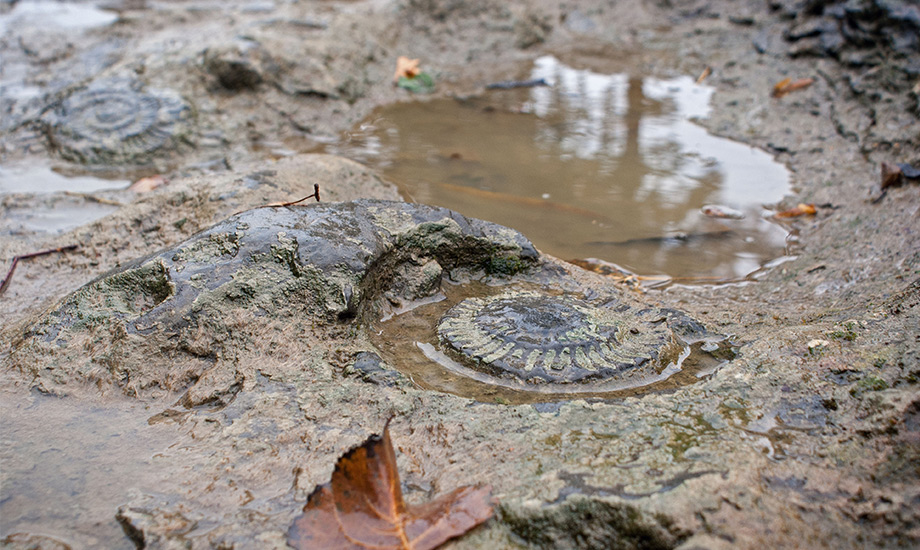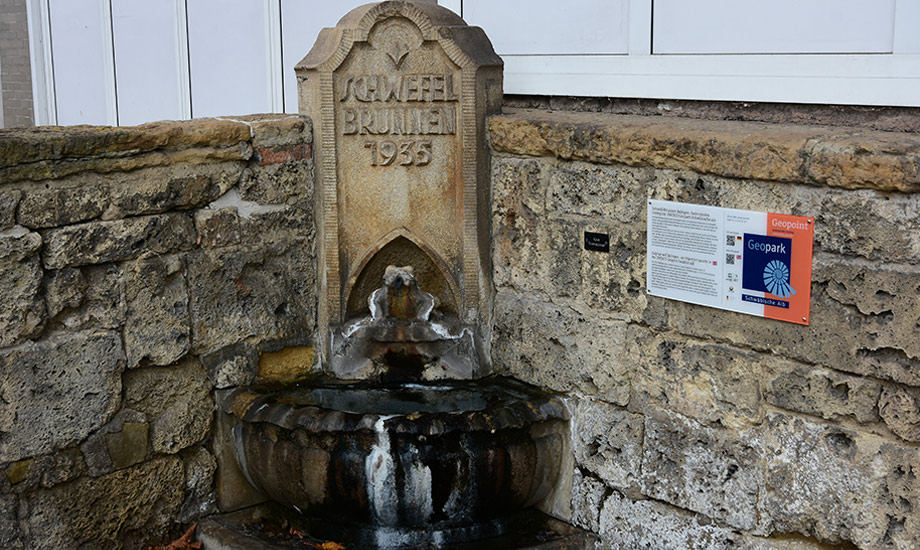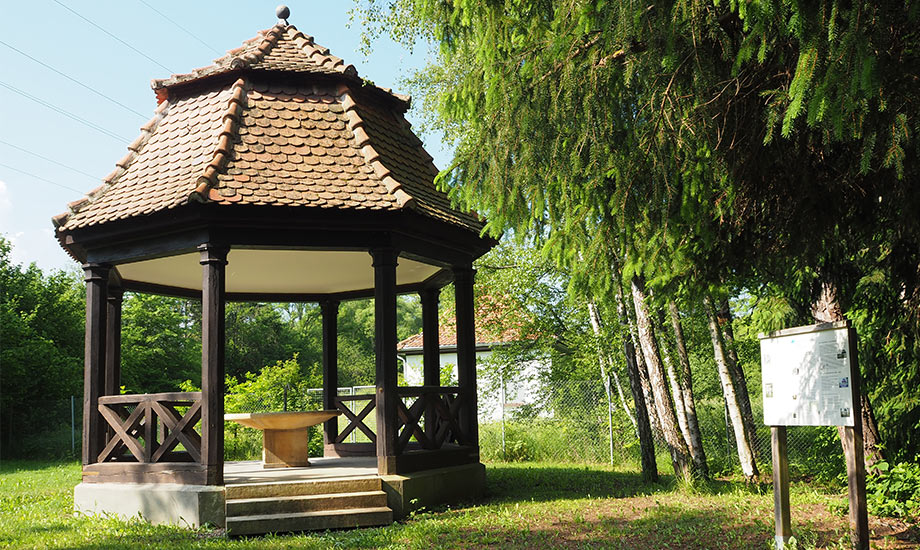Lower Jurassic - fossils in black
The oldest rocks in the Swabian Alb are between 200 and 174 million years old and date from the Lower Jurassic period. Large areas of Europe were covered by a tropical sea at that time. The deposits from around 180 million years ago called Posidonia Shale are world-famous. The area of today's Swabian Alb was part of the open sea, with fish, belemnites and ammonites and logs populated by crinoids. Large marine dinosaurs also lived here. The fossils of these sea dwellers have been preserved in the dark rock to this day in fascinating detail, e.g. bones or teeth or even the shapes of the animals, their last meal and the unborn babies in the mother's body.
A special condition of the sea during the Posidonia Shale led to this wonderful preservation. Water layers with different salinity and temperature formed a stable layering system that prevented any more mixing. As a result, fresh oxygen could not reach the seabed from above and a death zone formed over time due to toxic decay products. Bacteria that decompose organic material and scavengers could no longer live there. Moreover, since there was hardly any current, carcasses and plant remains sinking to the bottom remained complete and were gradually covered with sediment. High amounts of preserved organic material and sulphur compounds, such as the mineral pyrite, led to the dar colour of the fine-grained rock and gave it the name "Black Jurassic".
The healing effect of substances from the "oil shale" of the Lower Jurassic is used in the sulphur springs in Bad Sebastiansweiler, Bad Boll or formerly in Balingen. And perhaps some people still remember the strong-smelling cream called "Zugsalbe": this natural remedy is made from "oil shale". The active ingredient is the organic material that has been preserved in the rock over millions of years!
The ammonite pavement in Ofterdingen also derives from the Lower Jurassic, but is even older than the Posidonia shale.
Random finds can be compared and determined via our picture gallery and the Naturportal Südwest. Unusual finds are to be reported there.
-
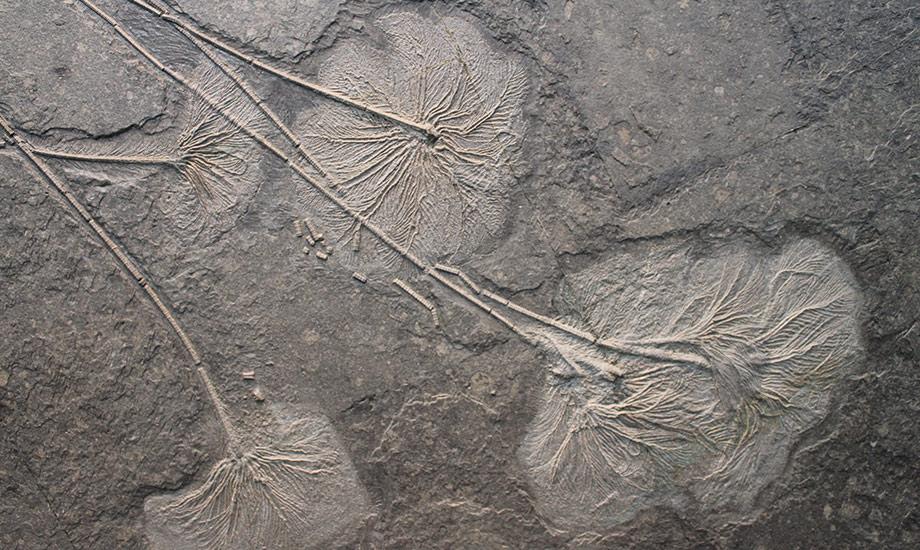 Lower Jurassic - fossils in black
Lower Jurassic - fossils in black -
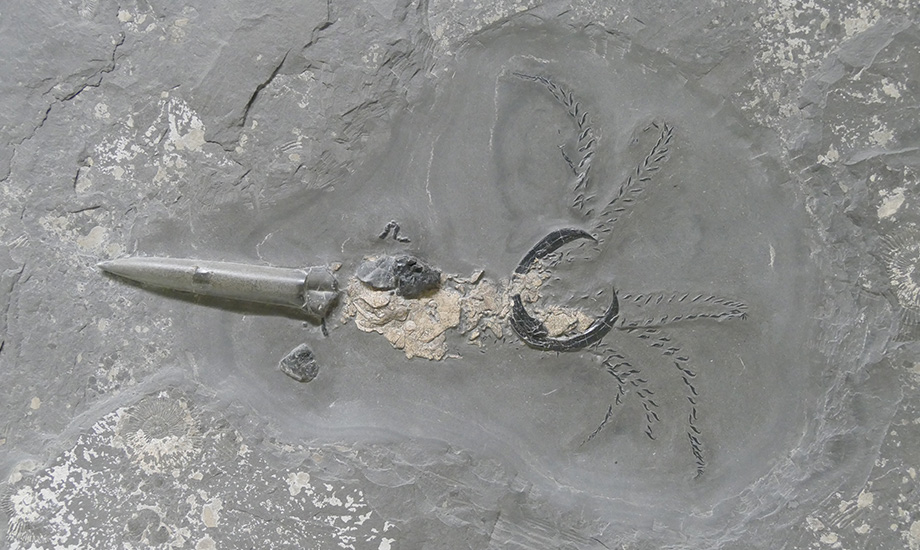 © Günter SchweigertBelemnite with soft tissue preservation and catch hooks (finds should be reported)
© Günter SchweigertBelemnite with soft tissue preservation and catch hooks (finds should be reported) -
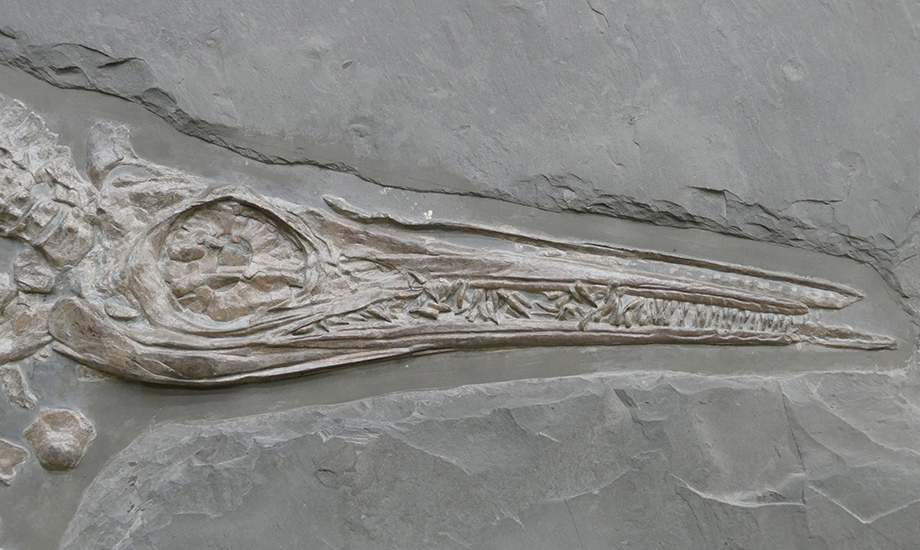 © Günter SchweigertSkull of a fish dinosaur (vertebrate finds should be reported)
© Günter SchweigertSkull of a fish dinosaur (vertebrate finds should be reported) -
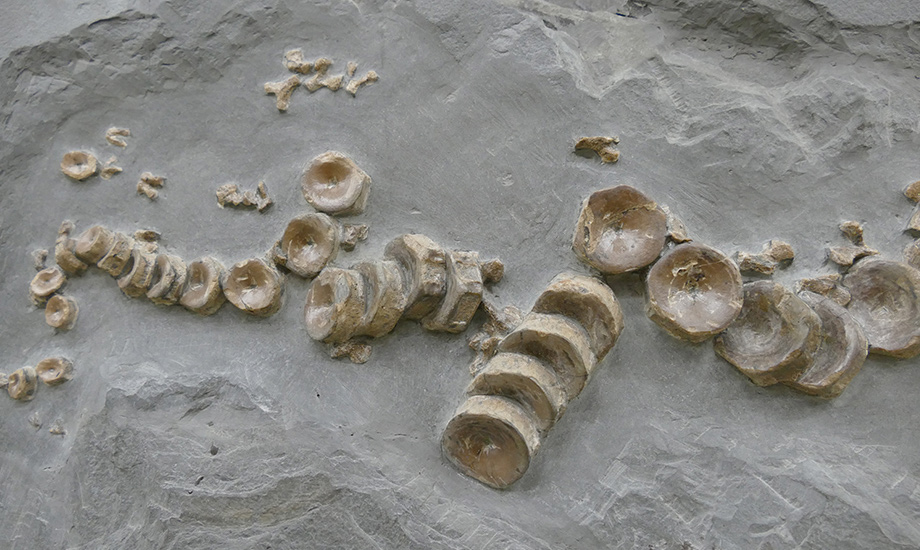 © Günter SchweigertVertebrae of a fish dinosaur (finds of vertebrates should be reported)
© Günter SchweigertVertebrae of a fish dinosaur (finds of vertebrates should be reported) -
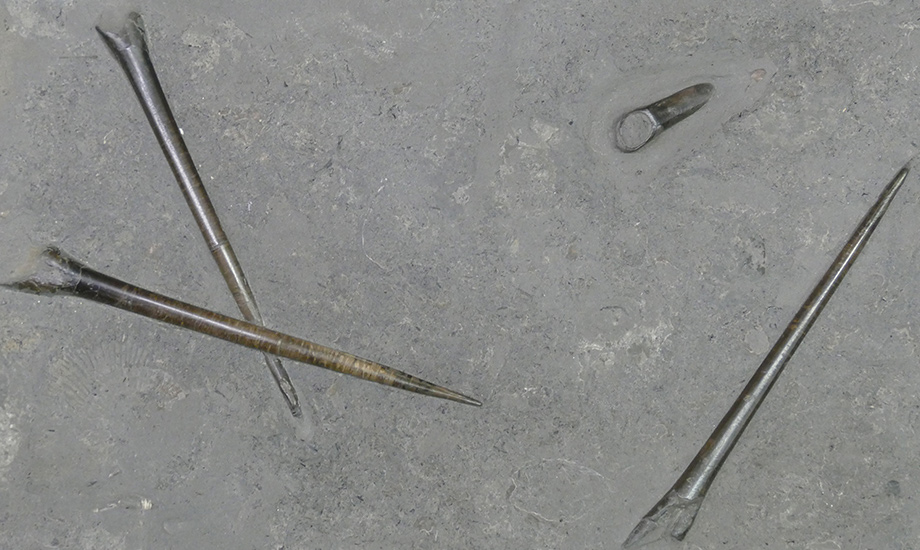 © Günter SchweigertBelemnites (Youngibelus). So-called rostrums are parts of the inner skeleton. The animal was about three times as large.
© Günter SchweigertBelemnites (Youngibelus). So-called rostrums are parts of the inner skeleton. The animal was about three times as large. -
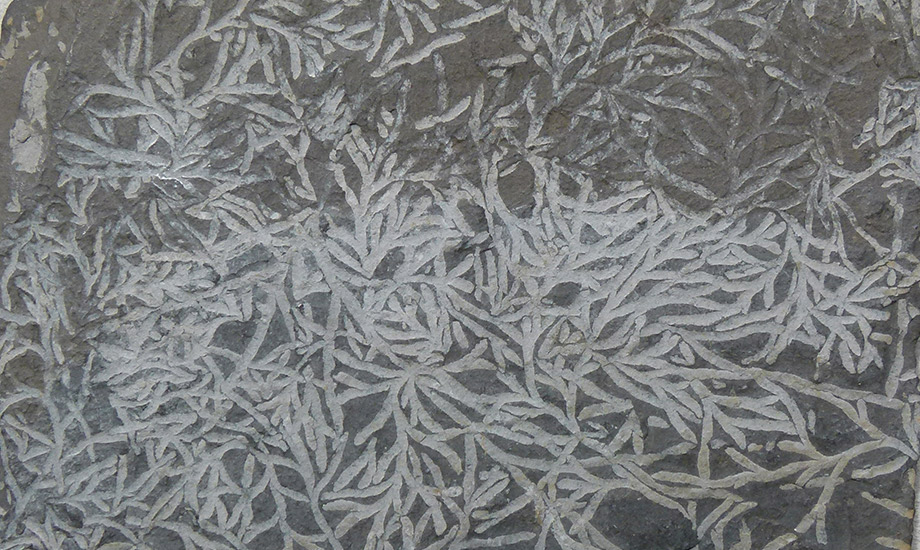 © Günter SchweigertTrace fossil (Chondrites) from an unknown animal. Trace fossils are not fossils in the classical sense, but preserved traces of eating or movement.
© Günter SchweigertTrace fossil (Chondrites) from an unknown animal. Trace fossils are not fossils in the classical sense, but preserved traces of eating or movement. -
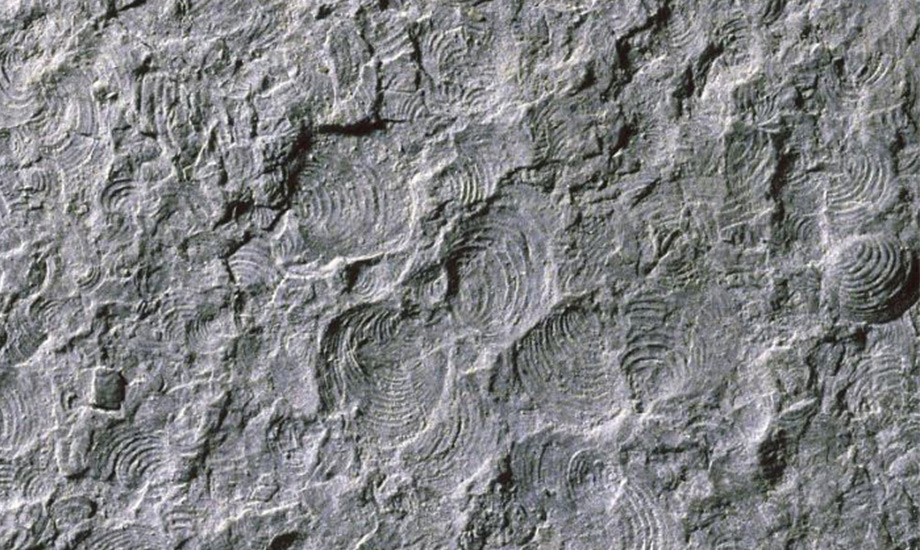 © GuenterSchweigertMussels (Bositra). The former name of the shell was Posidonia, hence the name of the Posidonia shale.
© GuenterSchweigertMussels (Bositra). The former name of the shell was Posidonia, hence the name of the Posidonia shale. -
 © HolcimCrinoids from the Posidonia Shale. Crinoids are not plants, but animals related to sea urchins and starfish (finds of crinoids must be reported).
© HolcimCrinoids from the Posidonia Shale. Crinoids are not plants, but animals related to sea urchins and starfish (finds of crinoids must be reported). -
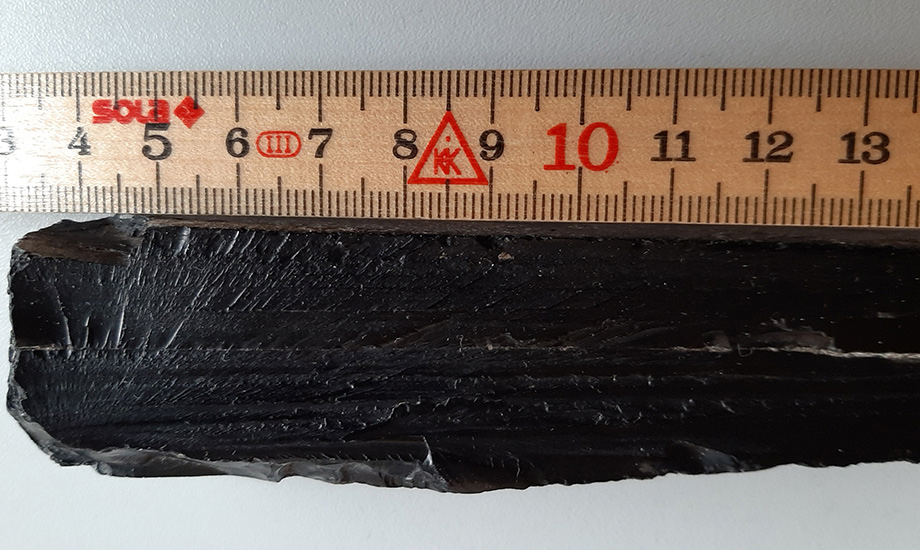 © Annette Schmid - RöhlJet. Pitch coal. Fossil driftwood
© Annette Schmid - RöhlJet. Pitch coal. Fossil driftwood -
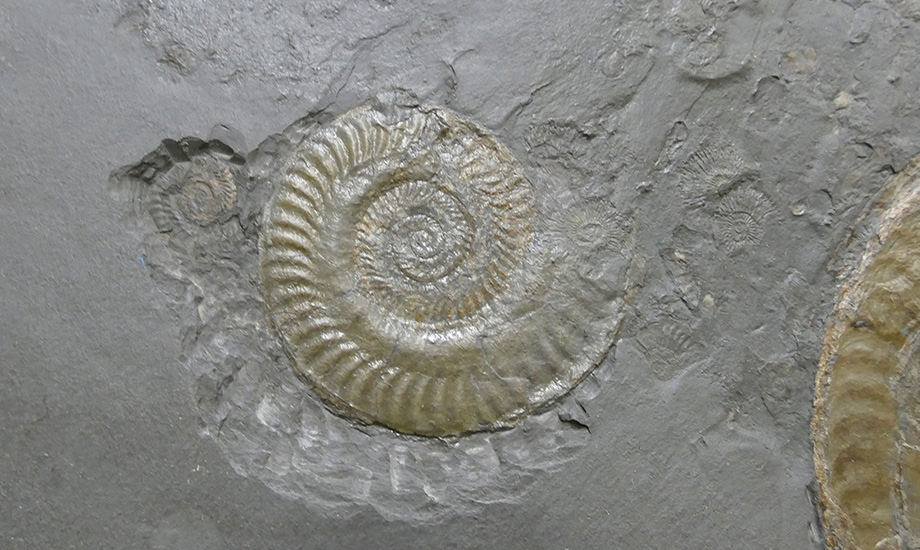 © Günter SchweigertAmmonite (Hildoceras)
© Günter SchweigertAmmonite (Hildoceras) -
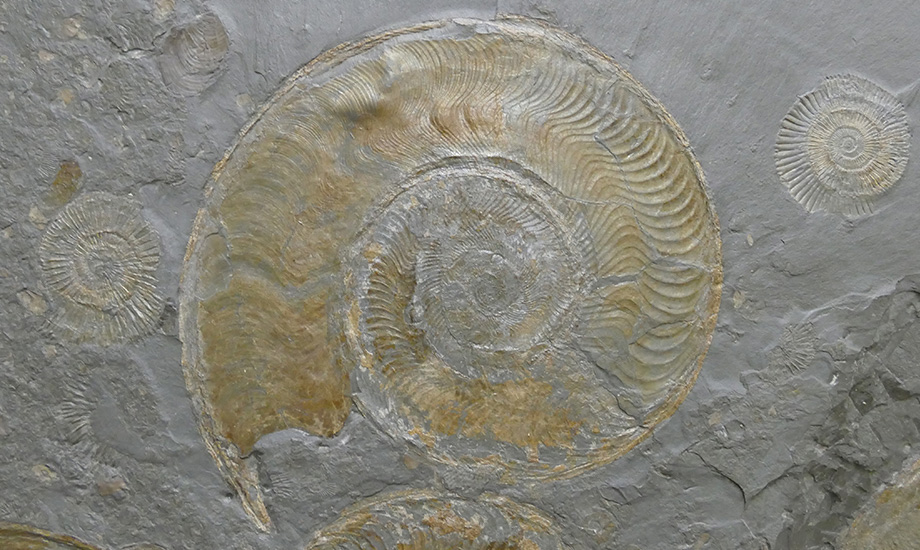 © Günter SchweigertAmmonite (Harpoceras)
© Günter SchweigertAmmonite (Harpoceras) -
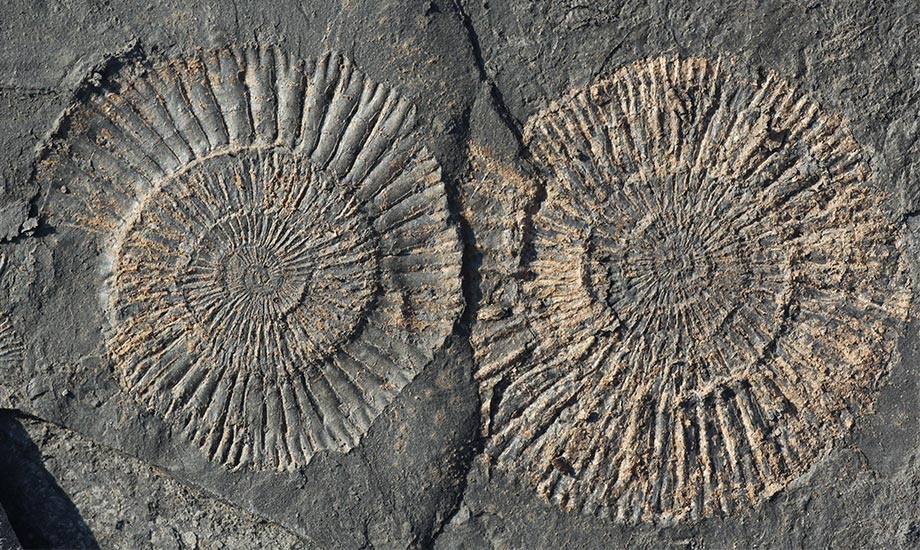 © Annette Schmid-RoehlAmmonit (Dactylioceras) (en)
© Annette Schmid-RoehlAmmonit (Dactylioceras) (en)
